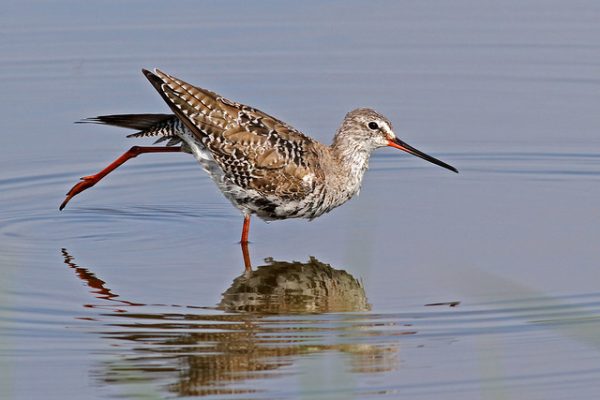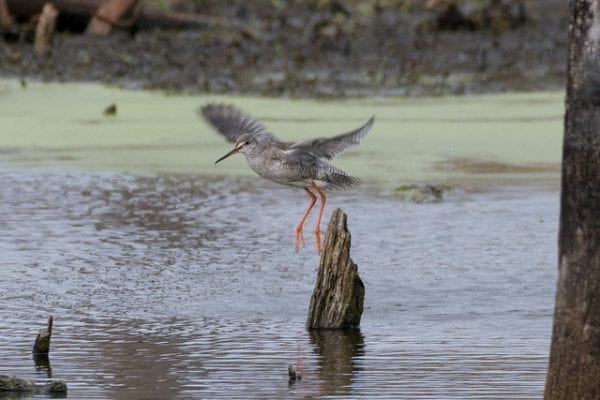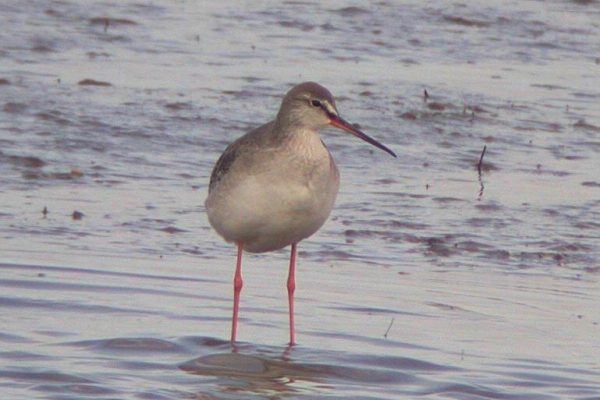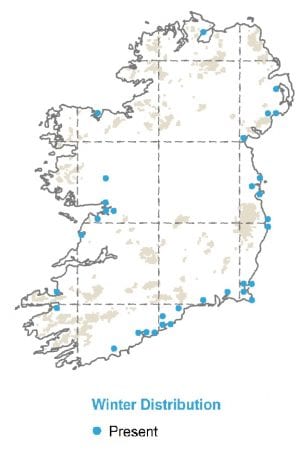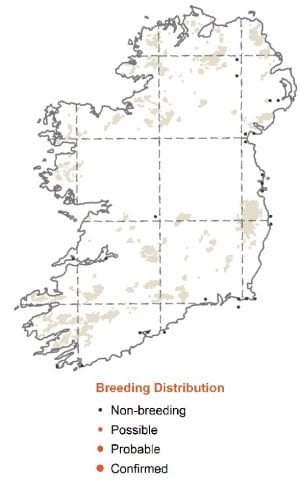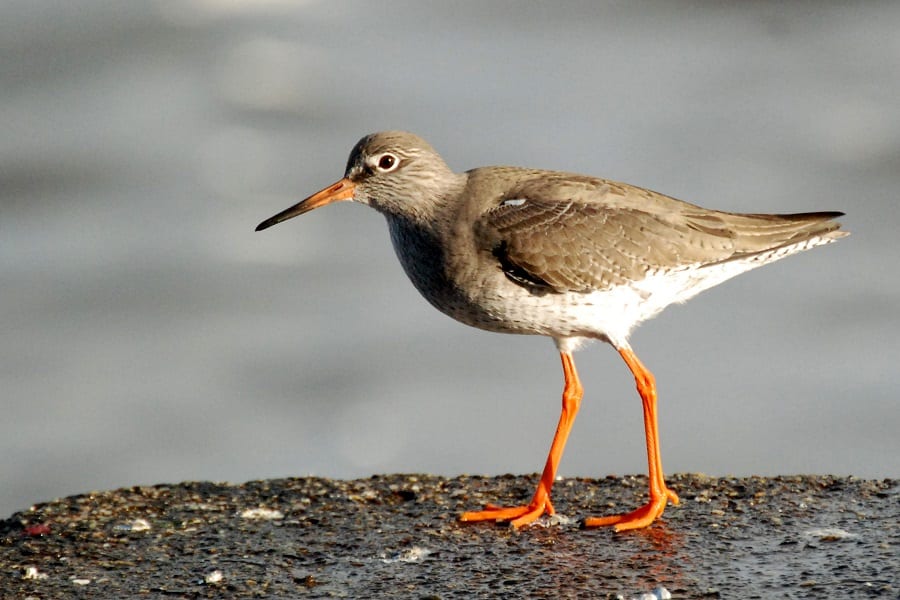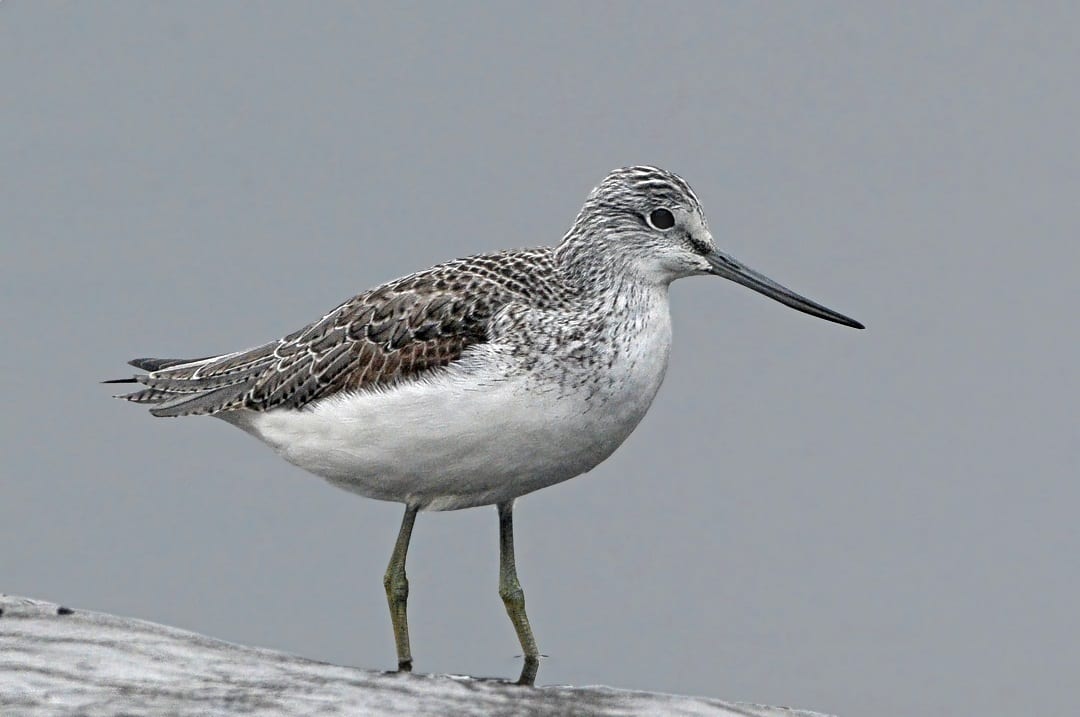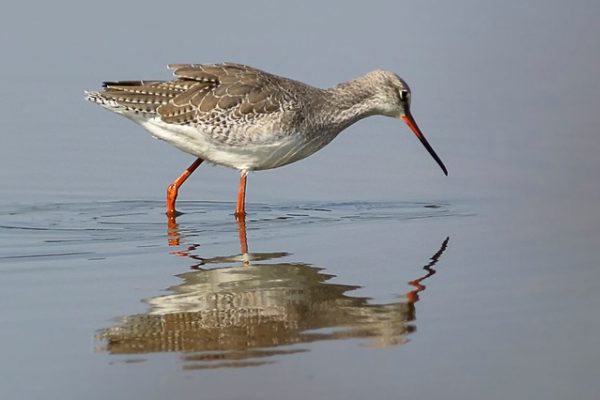
Spotted Redshank
| Irish Name: | Cosdeargán breac |
| Scientific name: | Tringa erythropus |
| Bird Family: | Waders |
amber
Conservation status
Conservation status
Status
Passage migrant in variable numbers to all Irish coasts from July to November. Scarce winter visitor mainly to the south and east coast.
Identification
Slightly larger and very similar to Redshank, especially in winter plumage. In all plumages has a distinctive bill pattern, where the upper mandible is entirely black and the lower mandible red. Adult summer Spotted Redshanks are very distinctive, being almost entirely black. Only the underwing remains white, while the rump is distinctly barred. Spotted Redshanks retain this plumage for only a few weeks and it is only infrequently seen in Ireland. Adult winter birds are much paler in comparison to Redshank, having a pale grey back and white underparts. Juveniles have dark brown barred underparts and back.
Voice
The main call is “chu-it” heard from birds in flight.
Diet
Hunts for fry, crabs and macro-invertebrates on muddy shores of estuaries and freshwater ponds.
Breeding
Does not breed in Ireland. Spotted Redshank breeds in bogs and marshes of northern Scandinavia east across Siberia.
Wintering
The majority of the European population winters in tropical Africa and Asia. On their migration, they can be regularly seen feeding with Common Redshanks on estuaries and muddy margins of ponds and lakes. Most sightings are of juveniles in autumn, with only a few summer-plumaged adults seen in spring. A few (<100) spend the winter, mainly on estuaries on the south coast.

